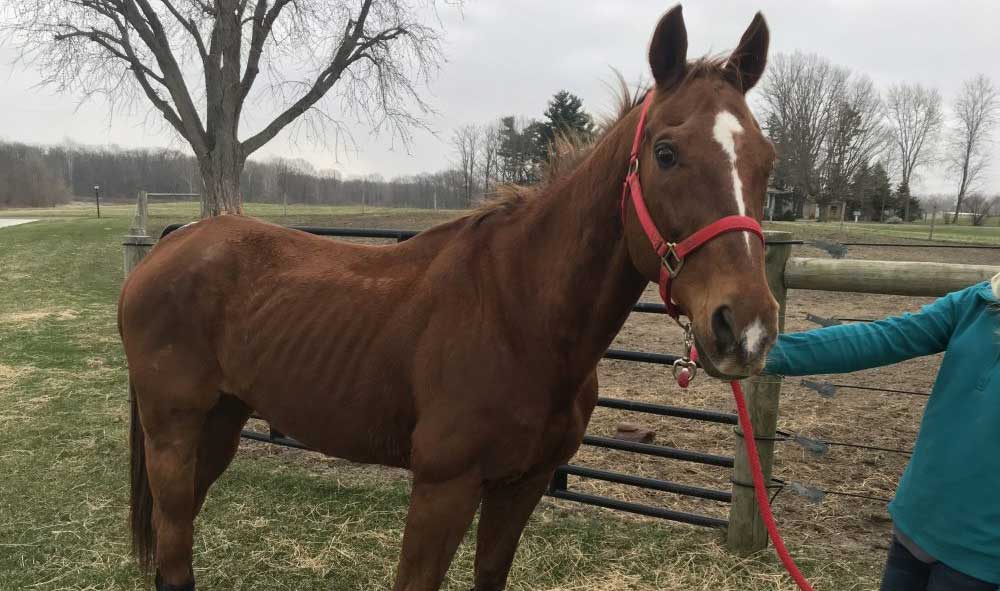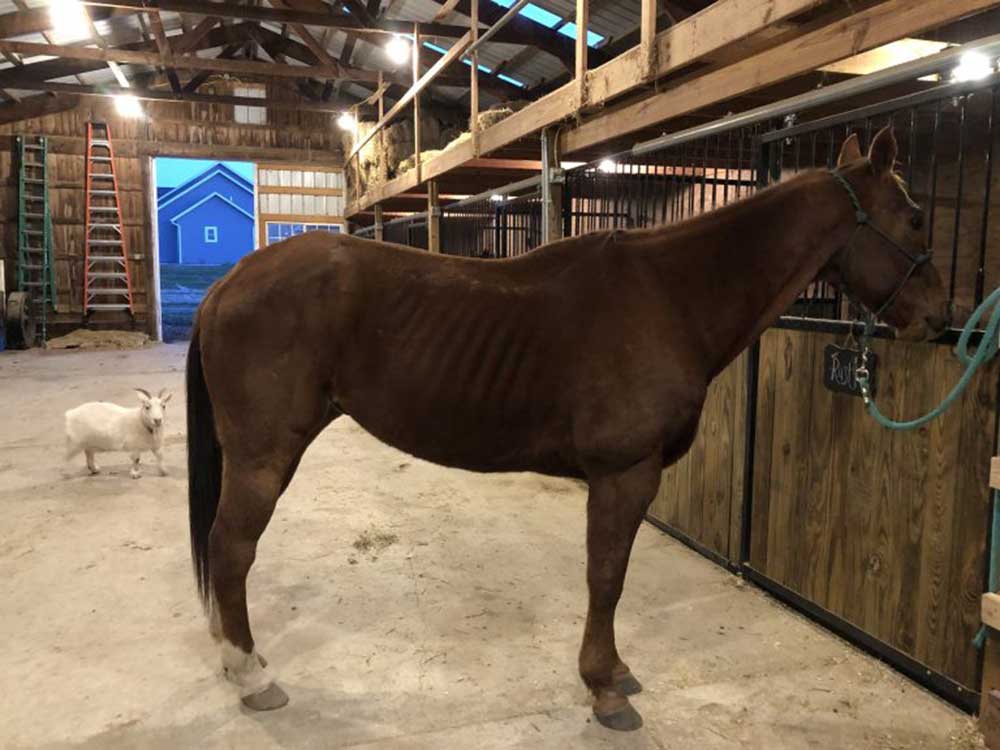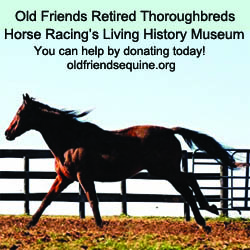
by Natalie Voss
Everyone, step away from your keyboards for a moment.
If you spend any time on social media pages geared toward horse rescue, specifically rescue from the slaughter pipeline, chances are you've seen a comment pop up urging others to “name and shame” the person responsible for the horse's predicament. What often happens next is the horse's most recent competition record or foal registration papers are accessed, screenshots are taken, and horsemen's names appear in the comments attached to the photo of the listless-looking horse.
In some cases, users will even “dox” the last known trainer or owner of the horse, posting their phone number or home address, urging others to flood them with angry calls or letters demanding an explanation for the horse's appearance in a kill pen.
“Naming and shaming” is not a new phenomenon, although its adaptation on social media is relatively new. Human rights groups have engaged in it for decades, drawing attention to genocides or other abuses and flagging those events for national or international media exposure. Some environmentalists have also tried it, calling attention to deforestation or poaching, though in those cases the culprit is less commonly named as an individual. Academic research into the technique has had mixed results; some studies find that particularly in situations of human rights violations, public attention on the behavior encourages governments or regimes to stop the abuses, while others have found that depending upon the type of government involved, that attention is either ineffective or may even make violence worse.
Now, this technique seems to have been appropriated, from experienced non-profits and professional journalists investigating bad actors to keyboard warriors using Equibase or old foal papers. They've gone from amplifying stories told by abused human beings to writing stories on behalf of animals who cannot tell us what has really happened to them. And there are a few problems with that transition.
Typically, this behavior is on full display in spaces designed to raise cash to “bail” out horses from the slaughter pipeline. In recent years the “bail” business has gotten to be a big one – dealers or feedlot owners will post photos of horses, typically acquired at small livestock auctions along with a bail price, set by the lot, to get that horse off a truck bound for a slaughter plant across the border. People on social media are encouraged to pay the horse's bail, sometimes with no expectation of taking physical possession of the horse themselves. The bail price is often significantly above the per-pound price dealers can acquire at the border, throwing into question the likelihood the horse was ever headed there in the first place. Sometimes the naming and shaming is encouraged by the kill pen or crowdsource groups, and other times it's a matter of the comment section turning into an angry mob with no encouragement from the page's owner.
And there's the first problem with participating in it – bail operations make their money by stoking outrage. Their business model relies on people around the world seeing photos of a horse in trouble and wishing they could keep it in their backyard. Most of them can't, so being offered the chance to assuage their discomfort with a PayPal transfer seems like a great solution. Outrage fuels more comments, likes, and shares, and that gets more exposure to the call for bail money.
Another problem with directing anger like this is accuracy. Jen Roytz wrote a great Aftercare Spotlight about this in 2016, detailing the case of a horse which brought scrutiny to the Doug O'Neill barn. Rescue advocates sent angry messages to O'Neill after a horse in an auction lot was identified as Dr. Mohrbacher, who had made three starts for the barn several years before and was subsequently claimed. In that case, the horse was incorrectly identified and never had an affiliation with the O'Neill stable. As we know from the ICareIHelp scandal, it's not uncommon for horses to be misidentified (willfully or not).
Even when they're correctly identified, the information on the horse's last known connections on Equibase or on registration papers may not be accurate, either. All too often, the “name and shame” technique gets implemented on trainers and owners who haven't seen the horse in years.
One evening, longtime horse owner Sandy Palmer's teenage daughter came flying out of her room in tears, crying that her former riding horse was in a Texas kill pen.
“She has a phone in her hand and she comes down the stairs saying, 'People are Facebook messaging me that I'm a horrible person for putting my horse in a kill pen,” said Palmer. “I'm like, 'Excuse me?' I was trying to wrap my brain around it.”
Palmer had bought a Quarter Horse named Rusty for her daughter some years earlier with the hope he would be her next barrel racer, and she put her daughter's name on his AQHA papers. The horse turned out to be extremely ring sour and despite patient, professional training, became dangerous for the girl to ride in the arena. Out on the trail, however, he was confident and comfortable. Worried her daughter would get hurt trying to work through the horse's issues, Palmer found a new home for him with the family's longtime farrier, explaining Rusty's behavioral problems and making clear he needed to go to a trail riding home.
She later learned the farrier had given the gelding away to a woman, who gave him away to someone else who traded him at the Kaufman Kill Pen years later for several other horses, dropping off the AQHA papers as she went. The kill pen advertised him as an experienced barrel racer with performance potential and posted a copy of his papers – with her daughter's name still on them from his competition days.
“I immediately called the kill pen and said, 'What can I do to get him out?' and he said, 'Pay me $2,500,'” Palmer said. “I told him my minor daughter's name was on the papers and he told me 'That's not my problem.' He said, 'How was I supposed to know the person's name on the papers wasn't still the owner?'
“They were also putting him on as 'deal of the century,' a $50,000 barrel horse you could get for $2,500. They said he had run barrels hundreds of times with kids, had done great.”
Palmer was stunned when she investigated, recreating Rusty's path from owner to owner and was told by law enforcement none of it was criminally actionable.

“This was something I didn't even know could happen,” she said. “He is a shell of the horse he once was. We were just trying to get him a nice cushy life, and this is the worst thing that could possibly happen. I wish people knew that [the slaughter pipeline] existed, because I did not. I really didn't. I feel so guilty about this, let me tell you. I tell him I'll spend the rest of his life trying to make this up to him.”
Then there's the possibility that the last public connections of the horse were lied to. Trainer Ron Moquett, who has logged more miles than he cares to think about claiming horses to retire them, recently experienced such a scenario. Moquett and owner B J D Thoroughbreds retired Right To Vote in 2016 and paid for his care for three years while he was rehabilitated from an injury and got some basic retraining. Moquett said he gave the horse to someone who assured him the horse was going to a home a few miles from his birthplace and would be a children's riding horse. Less than two weeks later, he got a call from Omega Horse Rescue saying the horse had ended up in a livestock auction. The owner Moquett had vetted gave the horse away within days and the horse quickly ended up at auction.
Moquett said he was shocked at the news and was glad Omega Horse Rescue reached out to him. (It should be noted the rescue did not call for attacks on Moquett and discouraged this behavior, though a few of its followers decided to send him and his children angry messages anyway.)
“To be so harshly judged without the facts or any kind of information to get direct information is kind of hard to deal with, especially when there's people out there reading it who may believe everything they see on social media,” said Moquett. “It's the people who think they care more than you when they don't know how much you care. I think everybody's got their heart in the right place; they just have to be careful how they do things.”
Moquett said one of the most frustrating things to see from keyboard warriors is a line drawn between the horse's earnings and the trainer's degree of responsibility for the horse's living condition years and several owners after retirement. In fact, many people don't realize the trainer only takes about 10 percent of a racehorse's earnings from hitting the board. Regardless, Moquett and his owners make a point of rehoming horses carefully and bailing them out of bad situations if needed, whether or not they were profitable for their human connections. Moquett and B J D Thoroughbreds stepped up for Right To Vote yet again and paid his way to Old Friends in Central Kentucky, where he now resides.
“I'm a firm believer that we need these organizations,” said Moquett. “We're so busy taking care of our horses and we're so far removed once they leave our barns that we need someone watching. It needs to be a web where we can make sure we're all keeping an eye out for everybody. We need the good ones to persevere.”
The truth is, no horse is really immune from falling into the slaughter pipeline, which is part of what makes it so disturbing. Even in cases where connections have done their best by a horse, it's next to impossible to track them. People move, they lose jobs or get sick, they sell or lease or give away horses, they lie about their intentions.
“Anyone, including Fox Hill Farm, could find one day that a horse has ended up in a kill pen,” said Victoria Keith, executive vice president of Fox Hill Farm and president of the National Thoroughbred Welfare Organization.”To me, that is forgivable as long as the person didn't do something to cause the horse to be in a kill pen, as long as you did your due diligence to find the horse a good home. Horses are not usually kept by one person; they're not like dogs and cats.”
Keith recently made the decision to name and shame one owner after she rescued two breeding stallions from Louisiana, but did so only after contacting the man to get his side of the story.
There's also the possibility that people may give a horse away, completely unaware the slaughter pipeline exists. Palmer said the experience with Rusty was a crash course for her family, and she won't be making the same mistake again. But there are lots of other owners like her who don't realize the perils of giving a horse away to the first person who shows up with cash and a trailer. Should they be educated? Of course. Should they be shamed? I'm not so sure.
What many advocates may not realize is that calling an owner or trainer to accuse them of maleficence also drives a wedge between the racing world and the rescue world. Being falsely, aggressively accused of not caring about your animal is enough to send any animal lover to the edge and many trainers are also animal lovers. Rescue advocates walk away thinking trainers don't care, and trainers walk away thinking rescue folks are wildly misinformed at best and a little unhinged at worst. Even if the misunderstanding eventually gets sorted out, both sides develop a suspicion of each other.
In the middle of all this is the horse, who sparks such profound emotion because he gives humans so much, but is speechless and largely helpless at guaranteeing his own welfare. What benefit does he get from this mutual misunderstanding? The problem of the homeless horse is an enormous one in this country, and it's one we need both animal welfare crusaders and racing insiders to solve.
I'm not suggesting the solution here is to pretend Thoroughbreds dropped out of the sky into kill pens. Having the proper Jockey Club identification on a posted horse may help a former connection find and help them, and there are certainly situations where the same owner/trainer's name comes up again and again in longitudinal studies of a single pen. Those situations merit investigation, but harassing them probably isn't going to make them stop. It is likely to make them work harder to cover their tracks the next time, and that makes it harder for regulators, tracks, and journalists like me to trace them.
All I ask is this: Think before you type.
About the Author: Natalie Voss, winner of the 2016 Eclipse Award for outstanding news/enterprise writing, is features editor at the Paulick Report.
Copyright © 2019, PaulickReport.com. Republished with permission.
Find other articles on this subject in our section on Retire & Rehome.













